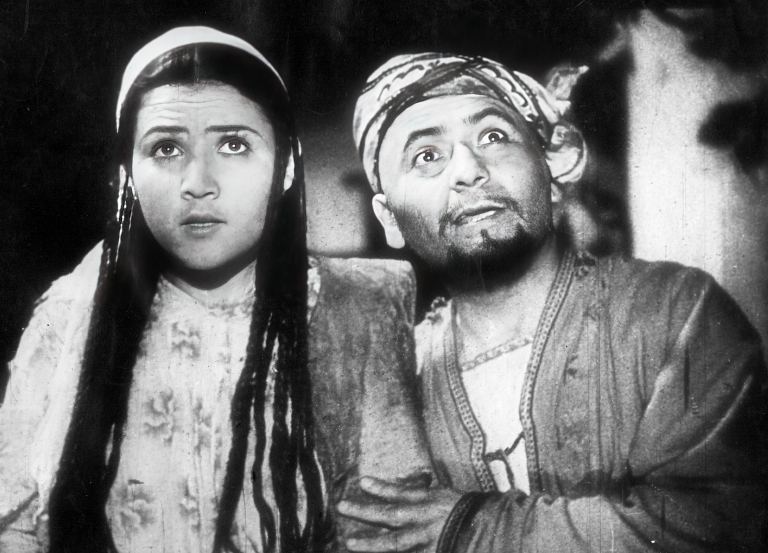Representation of Central Asia in Soviet Wartime Cinema
13 November 2023, 6:00 pm–8:00 pm

Orientalisation, Folklorisation, and Sovietisation. A SSEES Russian Cinema Research Group seminar with Assiya Issemberdiyeva (Queen Mary University of London)
This event is free.
Event Information
Open to
- All
Availability
- Yes
Cost
- Free
Organiser
-
SSEES
Location
-
Masaryk roomUCL School of Slavonic and East European Studies16 Taviton streetLondonWC1H 0BW
The Russian invasion in Ukraine served as a catalyst for questioning Russia’s “imperial innocence,” accelerating the re-evaluation of Soviet history and the process of decolonisation in post-Soviet regions. During World War II, Central Asia experienced intense Sovietisation through extensive propaganda efforts, and the wartime cinematic representation of the region is particularly enlightening.
In late 1941, the central Soviet film studios were evacuated to Kazakhstan, Uzbekistan, and Tajikistan. This shift is often viewed positively, supposedly marking the initiation of filmmaking in the region. However, the Uzbek case, where cinema existed since 1908, challenges this narrative, as native pre-revolutionary filmmakers were targeted by state-sanctioned oppression, often on charges of nationalism. Moreover, archival materials reveal tension between local officials in Kazakhstan and Tajikistan who sought to establish national filmmaking and the central body, the Committee for Cinematography, which prioritised its pre-existing agendas.
While local officials and artists aspired to depict local stories, film officials often rejected scripts with Central Asian themes. A handful of such films were produced, including Dziga Vertov’s To You, Front (1942), Vasilii Pronin’s Son of Tajikistan (1942), and Yakov Protazanov’s Adventures in Bukhara (1943), alongside various film concerts and short film collections (kinosborniki). Soviet filmmakers, in their quest to construct a morally superior narrative, often criticised Western approaches of exoticizing the Orient. Nevertheless, they ended up repeating those ‘othering’ practices, with the orientalisation of Central Asia in the Soviet context taking on a distinctly red hue. This discussion examines wartime orientalisation, folklorisation, and Sovietisation of Central Asia on screen and explores how films contributed to inter-racial and inter-ethnic hierarchies in the Soviet Union.
About the speaker:
Assiya Issemberdiyeva is a PhD student at Queen Mary University of London. She holds a Collaborative Doctoral Award from the London Arts and Humanities Partnership. Her thesis, supervised by Professor Jeremy Hicks and Doctor Guy Westwell, explores the representation of Central Asia in wartime Soviet cinema. Assiya is a member of the Association of Kazakhstani Film Critics. She programmed the Kazakh Film Week in London (2019, 2021), led an online course on film language (2022, Internews), and authored the TV show KinoScope for El Arna (Kazakhstan, 2022, 2023). She has contributed to Apparatus, KinoKultura, and The Calvert Journal, as well as edited volumes, including Gender and Kazakh Society (Almaty, 2022) and Kazakh Cinema: Cultural Matrix and Trends (Almaty, 2023).
Image credit: Adventures in Bukhara (1943), dir. by Y. Protazanov. Courtesy of Museum of Cinematic Arts of Uzbekistan.
 Close
Close

